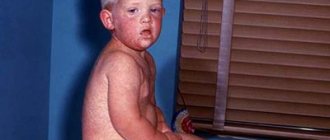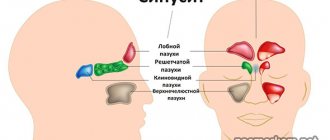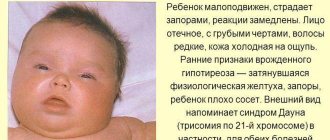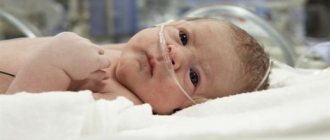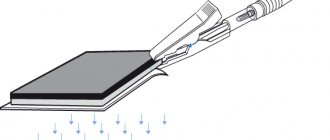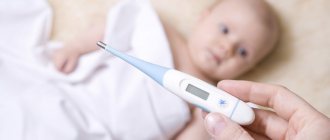Signs of a concussion in a child
Usually children rarely sit still, they are constantly moving - crawling, running, climbing somewhere. And injuries are inevitable here. The most common of them are impacts on objects and the floor. And, as a rule, with the head. Bumps and bruises accompany the child almost throughout childhood. It is almost impossible for parents and educators to keep track of this. Therefore, all that remains is to state the unwanted unexpected result of the baby’s active activity. But what if this is not just a bruise, and behind this lies the danger of a traumatic brain injury?
Concussion in pediatric traumatology is one of the most common reasons why children are admitted to the hospital. Since a child’s skull is much more fragile, the bones are thin and easily displaced during injury due to incomplete closure of the fontanel and cranial sutures, a head blow is a more serious problem than it can be in an adult. When struck, the brain, continuing to move by inertia, collides with the bones of the skull, as a result of which the connections between individual nerve cells are disrupted.
In relation to the rest of the body weight, a child's head is heavier than an adult's - the younger, the heavier. It simply outweighs and, when moving, especially directed to the side and down, the baby will hit his head faster than other parts. This is why babies often fall from strollers, from surfaces when swaddling, from parents’ hands, and hit the bathtub or crib bars. Older children, when mastering walking, jumping, and running, additionally experience problems with still imperfect motor skills and coordination. And even after learning complex movements, they continue to get injured when falling from swings, children's walls, slides, trees, steps. In addition, children have a reduced sense of danger and no fear of heights.
Also, a concussion can occur without hitting the head due to rough handling of the baby, too intense rocking, shaking, and in older children - jumping on their feet from a height, abruptly stopping a car, or a swing.
Main reasons
Let us consider the reasons for such a fairly high level of injury for each age group separately.
- In a child under one year old, the injury in question is, first of all, the result of careless care and carelessness of young parents. In the vast majority of cases, infants receive a concussion after falling from a crib, changing chest, from the hands of adults, from a stroller, etc. In this case, the baby, as a rule, falls down with his head, which has more weight relative to the body, since he does not yet know and does not know how to put his hands up to protect himself from a strong blow. That is why, even in the maternity hospital, all mothers are advised to under no circumstances leave the child unattended, and if they do leave, then take precautions.
- In children from 2-3 to 6 years old, the main reasons are the following factors:
- increased physical activity of the child;
imperfect coordination of movements and motor skills;
- lack of a pronounced sense of danger and fear of heights.
- In schoolchildren, according to many experts, traumatic brain injuries often remain hidden due to various circumstances. And not everyone runs straight to the doctor, but only contacts them if they feel unwell in the future. Moreover, it is worth noting that in adult children, a concussion can be observed without head injury, for example, during sudden braking or acceleration.
In principle, after any child begins to walk independently, injuries simply cannot be avoided. Moreover, they are of the most varied nature, where the head is predominantly affected by an impact. Due to his age, the child is very inquisitive and freely tries to explore new boundaries of the unknown, which is why troubles happen in the form of falls.
How does a concussion manifest in a baby?
As a rule, they depend on age and the degree of brain damage:
- Symptoms in infants may not be pronounced and manifest themselves in paleness of the skin of the face or the whole body in the first few minutes after the injury, and a frequent regurgitation reflex. The baby may not cry in the first few seconds after the fall. Sleep may also be disturbed, excitability may increase, the baby is capricious and cries for a long time, and refuses to eat.
- A child aged one and a half years and older may lose consciousness for some time when concussed. Nausea and one-time vomiting, slowing or, conversely, increased heart rate, breathing, changes in pressure, disorientation in space and time are noted. Complaints of headache, dizziness, feeling dazed, weakness; It is difficult to concentrate, vision deteriorates, and eyes hurt. Sometimes a child may not remember the moment of impact. It also happens that after an injury he goes blind for several minutes or even hours. This usually goes away later on its own.
- In a school-age child, the signs of a concussion may be the same with the addition of symptoms such as sleep disturbances, appetite, frequent mood swings, sweating, a feeling of general discomfort, and flushing of the face.
Sometimes it may be that after a bruise the child feels fine, but all the above-mentioned signs may appear and rapidly increase only after some time. Therefore, if a blow to the head has been recorded, it is necessary to very carefully monitor the condition of the victim throughout the day. And be sure to consult a doctor as soon as possible - a pediatric neurologist or neurologist, neurosurgeon. After all, the consequences that arise from a seemingly minor injury can lead to serious troubles.
Symptoms
Small children often fall and hit their heads. It is important to remain calm in such moments and objectively assess the situation. Knowing the symptoms, you can easily identify a head injury. In other cases, there is no need to panic, but carefully monitor the child for the next 24 hours.
The first and fundamental sign of a concussion is considered to be loss of consciousness after a blow.
When the child regains consciousness, he may not remember several minutes before the fall. Other main symptoms of brain injury are:
- vomiting, most often multiple times (if the child vomited only once, this may be the body’s reaction to stress);
- confusion (inadequate answers to simple questions, lack of understanding of what is happening);
- post-traumatic blindness (rare, occurs only in children, goes away after a few minutes or hours);
- headache;
- dizziness;
- drowsiness;
- apathy or overexcitement;
- capriciousness.
If loss of consciousness does not occur, this does not always mean that there is no cause for concern. This may be another traumatic brain injury, the symptoms of which appear with some delay.
In case of a concussion, all symptoms disappear on their own after a few days, if you follow the recommendations of doctors and take the necessary measures in a timely manner.
Dangerous symptoms and first aid
Examine and feel the child’s head, ask him what happened and how, if possible. If there are no changes in behavior, movements and well-being, the baby may have been hurt, but the brain was not damaged. Place something cool on the injury site, such as ice wrapped in a towel. Make sure it's not too cold.
Call an ambulance immediately if:
- when hit, a wound has formed on the head, and the bleeding cannot be stopped within 15 minutes; after the injury, the child became lethargic and soon fell asleep; the victim cannot answer simple questions, coordination of movements is impaired, vomiting recurs; the pupils become different sizes and/or the eyeballs begin to tremble. This indicates serious brain damage; the fontanel protrudes in infants; blood or clear liquid flows from the nose or ear; the child twitches strangely, moves his arms and legs unnaturally.
First aid:
Under no circumstances should you let your child sleep within an hour after the impact! Wake him up, no matter - day or night. If there is a wound, try to stop the bleeding. Apply a damp, cool cloth to your head. Limit movement. Don't give painkillers. If your baby loses consciousness, turn him on his side. It is desirable that the head and torso are on the same axis.
Classification and symptoms of the disease
Modern traumatology distinguishes three degrees of severity of concussion, which have their own symptoms:
- The first, or easy. It is not characterized by loss of consciousness, but confusion is noted. In rare cases, brief fainting may occur. Sometimes vomiting and headache may occur. As a rule, the child’s well-being returns to normal within an hour after receiving the injury.
- Second, or moderate severity. At this degree, pronounced agitation or inhibition is noted. Temporary loss of consciousness is typical (on average lasts from one to five minutes). After the child has come to his senses, he is disoriented in space for some time (usually twenty minutes). He does not understand where he is and does not remember what happened to him (later these memory lapses are restored). After some time, he may complain of weakness, dizziness and headache. Parents may notice that the child’s skin is pale and moist (cold sweat appears), and the pulse slows down. He becomes nauseous and vomits repeatedly.
- Third, or heavy. A severe concussion is accompanied by loss of consciousness for up to fifteen to twenty minutes. Upon waking up, the child is disoriented in space and stunned. He does not remember the details of what happened to him and cannot recall it in his memory even after some time. Noted:
- temporary decrease in visual acuity (post-traumatic blindness), which goes away on its own within a few hours or days;
- constant feeling of nausea;
- frequent vomiting;
- severe dizziness and intense headaches. Typical manifestations of the third degree of concussion are: impaired coordination of movements;
- severe lethargy;
- intense twitching of the eyeballs (nystagmus) or their divergence to the sides;
- tremors of the limbs (tremor);
- increase in blood pressure and pulse;
- increased breathing;
- drowsiness;
- noise in ears.
Often moderate and severe concussions are accompanied by bruises and hematomas of the brain and even fractures of the skull bones.
Each degree of severity of a concussion is manifested by its own symptoms.
It is very difficult to determine the presence of this condition in newborns and infants. However, there are a number of signs that will make parents wary. When a child has a concussion, the following symptoms are observed:
- pale skin;
- sweating not related to room temperature;
- agitation: the child becomes capricious and constantly cries;
- lethargy: the child reacts poorly to others, sleeps most of the time;
- severe fatigue;
- restless sleep;
- rapid breathing;
- fast or slow heartbeat;
- bulging of a large fontanel;
- poor appetite or complete refusal of food offered;
- frequent and profuse regurgitation, especially during feeding;
- the appearance of vomiting.
The main feature of a concussion in childhood is that obvious manifestations of the condition may occur some time after the injury, that is, not immediately. If you detect the slightest signs, especially if they were preceded by a head blow, you should immediately contact a medical institution for help.
Recovery and precautions
Signs of a concussion disappear on average after 1-3 days. And after 2-3 weeks, the state of health, as a rule, returns to normal.
The concussion itself in children may not be as dangerous as the consequences caused by the injury. In the future, this may result in frequent headaches, dizziness, weather sensitivity, insomnia, and a tendency to convulsions. Children who have suffered a traumatic brain injury may become aggressive, overly irritable, and whiny with age. It may be difficult for them in kindergarten or school due to the inability to concentrate, increased sensitivity to sounds and light. They get tired quickly and do not tolerate heat and cold well. In severe cases, even disorders of consciousness, memory and thinking disorders, and mental retardation are possible.
Therefore, you cannot continue normal activities after a concussion. The child must be provided with bed rest for several days, the duration depending on the severity of the injury, and psycho-emotional rest. Along with general treatment, older children are not allowed to sit at the computer, watch TV, play noisy games, or draw. Typically these conditions are met during hospitalization. After discharge from the hospital, you need to adhere to a limited regimen for 1.5-2 weeks. If there is improvement, they are allowed to play sports after a few weeks.
To prevent concussions in children, it is necessary to minimize the risk with the help of simple rituals and devices. The process of feeding and swaddling can be made safer if you swaddle your baby on a low sofa, from where it will be more difficult for him to roll off. Be sure to lay a thick rug on the floor, hold the baby so that he cannot suddenly roll over or slip out of your hands.
Do not leave the baby unattended for a second when swaddling, bathing, or feeding. If you need to leave to fetch a bottle, get clean onesies out of the closet, or answer the phone, take your child with you, put him in a crib with sides or in a playpen. When the baby has already learned to sit, buy a low stroller in which he can not only sit, but also lie - it is more difficult to fall out of it. Whenever possible, secure your child - in a stroller, in a car seat, on a swing.
When the baby begins to walk, you need to make sure that all dangerous sharp corners are isolated - wrapped in thick material, covered with something soft but heavy. Try to remove furniture that the child could move. Cover the area where he most often walks and crawls with rugs. You should also think about special socks with rubberized inserts in the soles.
You can try to teach an older child to fall in a special way, placing his arms or on his side in the fetal position.
To summarize, it should be said that as soon as you become aware of an injury or you observe signs of a concussion in a child, do not wait - the little victim needs an urgent examination by a doctor. And the sooner the severity of brain damage is diagnosed, the more likely it is that the consequences will pass, and the more complications can be avoided.
How to identify a severe bruise from a fall
Despite the fact that young children fall a lot, most often there is only a bump, bruise or swelling at the site of the injury. Thanks to the elastic skeletal system of the skull, a concussion in infants due to a fall is unlikely. It is enough to apply a cold object to the bruised area, and the bruise will go away without consequences in a few days.
But there are times when, when falling, a baby can hit a sharp corner with its head, and then the first symptoms of a concussion appear.
If a large hematoma appears at the site of the injury, you should immediately consult a doctor:
After the child falls, strong and prolonged crying appears. At the same time, he knocks his legs and waves his arms. In other cases, on the contrary, he becomes lethargic and drowsy. Vomiting occurs. The child refuses to eat and spits up after eating a small amount of milk. There is moodiness and irritability. Sleep is disturbed: the baby has trouble falling asleep and may wake up crying during sleep. Pallor of the skin is observed. Increased sweating and a sharp rise in body temperature may occur. Symptoms of visual impairment are likely - blurred vision, poor concentration. If a baby is seriously injured, the fontanel may swell.
At the first appointment with a specialist, they are usually immediately referred to a neurologist if fundus disorders and other neurological signs are observed.
How are head injuries in children treated?
After the child has fallen and signs of a concussion appear, emergency doctors should be called. Having determined the child’s condition, they will decide on further tactics - perhaps they will give some recommendations or decide on hospitalization for a detailed examination. There is no need to get to the hospital yourself.
Before the doctors arrive, the baby should be provided with rest, not given the opportunity to make unnecessary movements, and placed on a hard surface.
There is no need to let the child fall asleep. If he loses consciousness, turn him on his side. No medications or water should be given.
If a baby experiences loss of consciousness, you should not panic. You can bring a cotton swab dipped in ammonia and apply a cold object to your head. You should feel and count the pulse. Loss of consciousness in infants is extremely rare; signs of a concussion appear a few seconds or minutes after the fall.
Treatment of a child can be carried out both at home and in a hospital. The main condition is compliance with bed rest for several days or weeks. In some cases, surgical intervention is provided - it all depends on the severity of the condition.
The following medications may be required as therapy:
- to reduce intracranial pressure; to eliminate or prevent seizures; Diuretics may be prescribed to prevent cerebral edema; potassium preparations; analgesics for pain relief; sedatives; nootropics that improve brain metabolic processes.
The hospital will carry out the following tests to make a diagnosis:
- urine and blood analysis;
examination of the eyes using an ophthalmoscope (intracranial pressure is determined); neurosonography reveals cerebral edema, hemorrhages, bruises and hematomas (it can be done on children under two years old, since the skeletal system is still soft, and the results are accurate); radiography (the method allows you to determine the integrity of bones after injury); brain tomography; electroencephalography (allows you to evaluate brain activity).
The child is examined by several specialists - an ophthalmologist, a traumatologist, a pediatrician, and a neurologist.
Attention is paid to the patient’s consciousness, mobility, sensitivity, motor activity, and the presence of reflexes.
If the blow was not strong, then you can take your time with the inspection, but you also cannot postpone it for a long time. First of all, you should consult a pediatrician. After examining the symptoms of falls and injuries, he will decide whether to refer you to other specialists.
If a child has injuries to the face or mouth, doctors such as a surgeon and dentist may be needed. A blow to the temporal lobe can lead to hearing impairment, so it is worth visiting an otolaryngologist. If the blow falls on the frontal lobe, you need to consult an ophthalmologist. If the back of the head or cervical spine is affected, consultation with a neurologist, surgeon, or traumatologist is required.
Treatment
The basic principle of treating a child diagnosed with this pathology is absolute rest and specialist supervision for some time.
- Inpatient observation for several days is advisable for early detection of severe injuries and the possibility of preventing complications.
- Limitation of physical activity, even when the little patient is in excellent health.
- Complete exclusion of watching TV, computer games, and sports.
Drug treatment involves prescribing the following drugs:
- Diuretics to eliminate swelling of the brain and other consequences after a stroke - Diacarb, Furosemide. These drugs are used in mandatory combination with potassium-based drugs (Asparkam, Panangin).
- Drugs that stimulate the supply of sufficient nutrients to the brain and improve its blood circulation - a group of nootropic drugs (Cavinton, Piracetam).
- Sedatives - for example, phenozepam or valerian-based infusion.
- Antihistamines - Suprastin, Fenistil, Diazolin.
- Painkillers - analgesics (Sedalgin, Baralgin).
- Means for relieving nausea - Cerucal.
- Vitamin therapy.
Consequences of a severe injury
Symptoms from a concussion may not appear immediately, but may take several months or even years:
- weather-related headaches; asthenic syndrome; epileptic seizures; disruption of the cognitive (attention, memory, thinking) and emotional (irritability, depression) spheres; pathological changes in the muscular system.
In more severe cases, there may be disability or death (if the child is unconscious for a long time).
Small children should not be left unattended, even for a short time. Even if the child has not yet learned to roll over, he can slide off the surface of the changing table, actively moving his limbs. The crib must have bumpers. Most injuries under one year of age occur due to the carelessness of adults, so leaving a child on an open high surface (stroller, table, bed) is not allowed even for a second.
Determining a concussion in an infant
One of the most commonly diagnosed injuries in young children is concussion. The reason for this may be a fall from any surface to the floor due to an oversight by adults or even too intense motion sickness.
Parents of infants need to know how to identify the presence of damage and take immediate action. Knowing the signs and symptoms of injury will help determine the nature of treatment and protect the baby from further negative consequences.
Doctors classify a concussion as a mild degree of brain damage, in which the structures of the organ do not change, but its functions are temporarily disrupted due to the shaking of molecules.
Immediately after a fall, you need to pay attention to the presence of external damage to the baby’s head. After any fall, redness of the area that received the blow is observed; the child feels pain.
If after some time only a slight swelling remains, then everything turned out to be a bruise of soft tissues, which does not fall into the category of injuries. But the appearance of hematomas is an alarming sign, indicating a possible concussion.
Typically, infants rarely lose consciousness due to a concussion, unlike older children and adults.
If after hitting the floor there was silence lasting from a few seconds to a few minutes before the scream began, the baby experienced loss of consciousness.
In infants, this is observed mainly with a brain contusion - an even more serious injury.
Due to physiological characteristics, a concussion in an infant manifests itself in a special way. So, the normal state immediately after the fall is sharply replaced by poor health, definitely indicating that something is wrong with the baby. The main symptoms of concussion in infants include:
- Frequent episodes of regurgitation; Pallor of the skin; Repeated vomiting; Increased restlessness and moodiness for the absence of apparent reasons; Sleep disorders – insomnia or atypical sleepiness.
There are no specific signs that definitely indicate the presence of brain damage in infants. The above symptoms are also observed in other negative conditions in children under 1 year of age. Therefore, if you have the slightest doubt, you should definitely seek help from specialists.
Signs of trouble after the trauma experienced may disappear after a few hours or days: accordingly, the parents decide that the critical period has passed and the baby has recovered. But negative processes in the brain continue, which is very dangerous for the little man. In such cases, there is no point in leaving things to chance.
Causes and factors for the development of the condition
The high rate of injury at an early age is associated primarily with increased activity. In addition, in children, motor skills and normal coordination of movements are not fully formed, and the instinct of self-preservation is practically absent.
The main cause of concussion in children under the age of five is a fall from a height. Children under one and a half years old very often fall from the bed, sofa, chair, and sometimes even from the hands of the person holding them. This is mainly due to the banal inattention of parents: mom (or dad) may simply be distracted by something and not notice how the child crawled to the edge of the bed.
It happens that injuries are associated with violation of safety rules when using strollers or changing tables, which, as is known, have a hard surface. Some parents (or grandparents) carelessly place their children on them, hitting the baby's head. The blow may be completely unnoticed by an adult, but significant for a baby.
Often, a concussion can occur after intense rocking of a child or as a result of sudden braking or acceleration (traumatologists call this phenomenon shaken baby syndrome). One-year-old children (some earlier, some later than this age) are already standing on their feet and exploring the world around them. Due to the fact that the muscles and ligaments of the legs are poorly developed, falls and head hits often occur.
Falling from a height is the most common cause of concussion
Older children develop new interests, their social circle expands, and games become more active and dangerous. Unfortunately, there are situations when push comes to shove. Due to the fact that children spend most of their time outside the home (kindergarten, school, various development centers, and so on), it can be simply difficult for parents to keep an eye on their child.
Diagnostics
Final confirmation of the diagnosis in a small child is possible only in a hospital, where the little patient will be examined by a neurologist and traumatologist, and the complaints of parents and accompanying persons will be heard. Diagnosis of concussion in this age category (from 0 to 12-18 months) is as follows:
- Doctors evaluate the child’s motor activity and reflexes. The degree of mobility and sensitivity is determined. Intracranial pressure is determined using an ophthalmoscope. The injury is also diagnosed by ocular neurological signs. Neurosonography (ultrasound of the brain) is performed. This diagnostic method is optimal for children under 1-1.5 years old, when the fontanel on the head has not yet closed.
Mild brain damage in infants is usually treated at home. Doctors prescribe limiting physical activity and taking safe medications to reduce seizures and intracranial pressure. Sometimes, to prevent possible cerebral edema, children are also prescribed a diuretic in combination with potassium supplements.
If, after a fall, the child experiences redness in the bruised area of the head, the child becomes nervous and, even after calming down, continues to behave in an atypical manner, you should call an ambulance rather than tempt fate.
Immediately after the child has fallen, it is necessary to apply any cold object to the bruised area (a damp towel, an ice pack, etc.) - this will help reduce the inevitable manifestations of swelling and relieve the pain of the little sufferer.
Then it would be best to call an ambulance team, which will deliver the child to the necessary specialists. You can also consult a doctor yourself, but as time passes, it will be more difficult to diagnose the severity of the concussion.
Diagnosis and differential diagnosis
Diagnosis of a concussion is based primarily on the manifestations of the condition. A child with severe symptoms must be examined by two specialists: a pediatric traumatologist and a neurologist (neurologist). In some cases, consultation with a neurosurgeon is required.
In addition to examination, additional examination methods are often used to confirm or exclude the diagnosis and detect concomitant pathologies. Most often used:
- Neurosonography (NSG). The fastest and safest examination method. Informative when studying the state of the brain in children under two years of age. This is due to the fact that at this age the bones of the skull are not as dense as in older children. During the examination, the specialist can see the state of the brain structures and identify associated pathologies (edema, hematomas, bruises, hemorrhages, etc.).
- Echoencephalography (Echo-EG). The technique determines the displacement of the midline of the brain, on the basis of which the presence of any formation in it or a hematoma is determined. Such research fades into the background, since it is not entirely accurate.
- Electroencephalography (EEG). The study provides an assessment of the bioelectrical activity of the brain, on the basis of which it is possible to identify injured nerve tissues and the probable location of their localization, and also allows us to determine the severity of the injury.
- Rheoencephalography (REG). The technique allows you to dynamically monitor the tone of the brain vessels and the state of its circulation. In addition, using REG, you can determine the degree of hemodynamic impairment. The technique is widely used to study the state of brain structures in very young patients (newborns and infants).
- X-ray examination of the skull. Allows you to determine the integrity of the skull bones and is used in cases of suspected fractures. The method is widely used, but it is impossible to track the state of the brain with its help.
- Computed tomography (CT). It is a modern technique for identifying pathologies of the nervous tissues of the brain and skull bones. Allows you to identify even the slightest areas of bruises, hemorrhages and the presence of a hematoma or any foreign body.
- Magnetic resonance imaging (MRI). Unfortunately, the method will not be able to reveal the nature of the injury, since the bones of the skull are poorly visible with its help. MRI is mainly used to assess the condition of individual brain structures. The main disadvantage of the study is the duration of its implementation. There is no child who could lie motionless for twenty minutes or more. In this regard, the little patient is forced to be given anesthesia before the procedure.
- Lumbar puncture. It is used to diagnose pathology in children quite rarely and in the most extreme cases. It involves collecting cerebrospinal fluid by inserting a needle from a special syringe into the spinal canal in the lumbar region. The method allows you to identify infectious lesions, hemorrhages and inflammatory processes in the brain and spinal cord.
Computed tomography allows you to most accurately identify brain pathologies after injury
Consequences
If a concussion is suspected, many parents do not want to show their child to specialists for fear of reproaches against them. And this is very in vain.
After all, even if the head injury soon passes, and the baby feels healthy and enjoys life, there is still no guarantee that the concussion experienced in infancy will not manifest itself negatively in the future.
The consequences may be the following:
- Severe headaches; Distraction of attention; Problems with memory and thinking; Poor academic performance, inability to properly assimilate educational material.
In the most severe cases, it is even possible to develop serious illnesses leading to disability and mental retardation.
After the baby falls, it is necessary to understand the issue of how seizures manifest in infants.
We recommend that you read the publication on the topic of why a child walks on his toes.
Summarizing
The child is rehabilitated after 2-3 weeks. If there is no cause for concern, the child can return to normal life, including attending nursery or school.
It is important to remind once again that turning to specialists plays a decisive role in the further development of the child, eliminating serious consequences.
During concussion prevention, constant, vigilant parental supervision is required. If an older child had an injury, then he needs to be told how to behave correctly and how important this is for recovery and future life.
